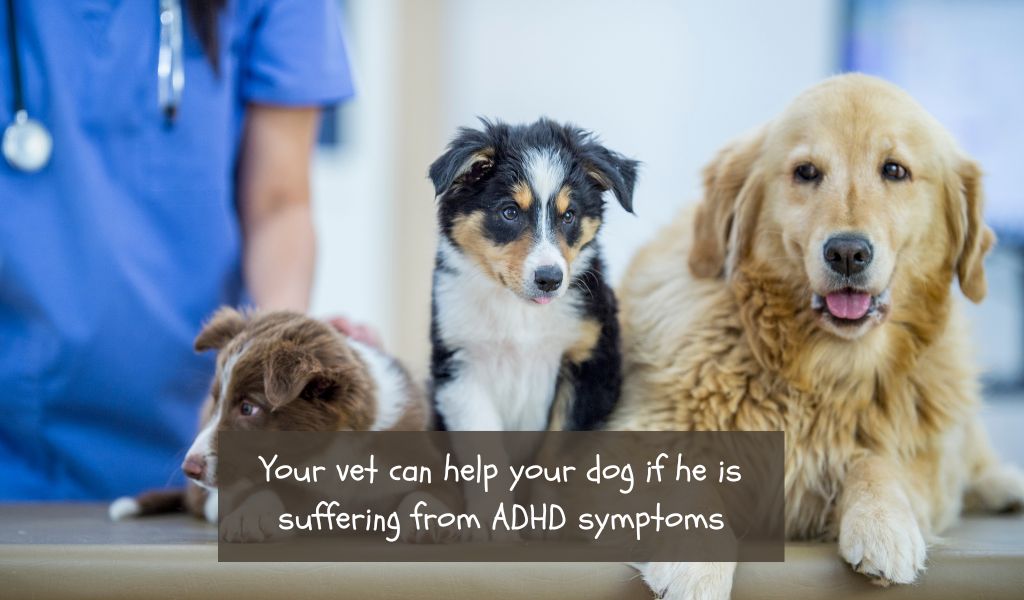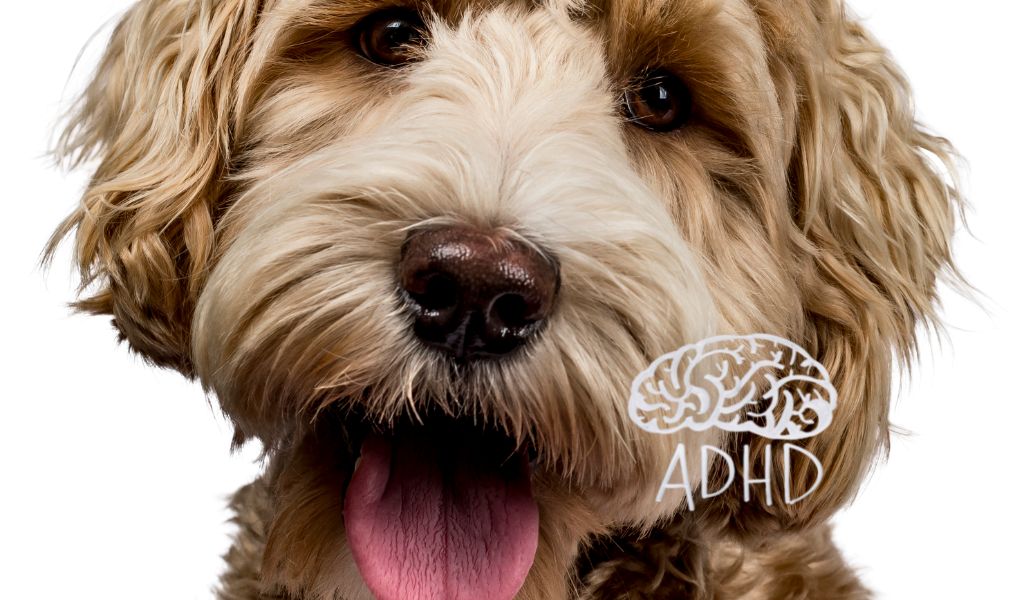Canine ADHD, also known as hyperactivity or attention deficit disorder, is a condition that affects many dogs.
It is characterized by excessive activity, impulsivity, and an inability to focus or concentrate for long periods of time.
Hyperactivity or Attention Deficit Disorder (ADD) in dogs is a behavioural problem that can be very disheartening for owners to deal with.
It’s often characterized by restlessness, endless barking, and destructiveness.
If left untreated, these behaviors can create an intense strain on the relationship between an owner and their dog.
The good thing about the condition, however, is that it can be managed and even cured with careful observation, patience, and in some cases professional assistance.
Training methods such as puzzle games and canine enrichment are particularly effective when dealing with ADD in dogs as they provide mental stimulation while also teaching your pet self-control.
Provide your dog with a healthy diet, lots of exercise, training and care. Although there is no guarantee, by doing these you will help to reduce levels of hyperactivity.
Causes of canine ADHD
The exact causes of canine ADHD are still not fully understood, however, there are some potential underlying factors that may contribute to its development.
For example, genetics may play a role in certain cases, if one or both parents have been diagnosed with the disorder then their offspring may be more likely to develop it as well.
In addition, traumatic events such as abuse or neglect may increase the risk of developing canine ADHD.
Lastly, diet has been linked to some cases of canine ADHD—if your dog’s diet consists mainly of processed foods with little nutritional value then this could be contributing to its symptoms.
Other factors that may contribute to the development of ADHD in dogs include a lack of socialization, boredom, and a high-sugar or high-fat diet.

Symptoms of canine ADHD
Symptoms of canine ADHD can vary from dog to dog, but common signs include:
Excessive barking or vocalization
Destructive behaviour, such as chewing or digging
Inability to focus or concentrate
Hyperactivity and restlessness
Impulsivity and lack of impulse control
Difficulty learning and following commands
Excessive panting or drooling
Diagnosing canine ADHD
Diagnosing canine ADHD can be challenging, as there is no specific test for the condition.
A veterinarian will typically perform a physical exam and may conduct blood tests to rule out other medical conditions that may cause similar symptoms.
They may also recommend behavioural testing to assess the dog’s attention span and ability to concentrate.
Treating canine ADHD
Treatment for canine ADHD may involve a combination of medication and behaviour modification.
Medications such as Ritalin and Adderall may be prescribed to help improve focus and concentration, but they should only be used under the guidance of a veterinarian.
Behavioural modification techniques such as positive reinforcement training and environmental enrichment can also be effective in managing symptoms of canine ADHD.
Once your veterinarian has confirmed a diagnosis of canine ADHD they will recommend an appropriate course of treatment based on your dog’s individual needs.
This may also include dietary changes such as incorporating nutrient-dense whole foods into their diet.
Additionally, supplements such as omega-3 fatty acids have been found to help with symptoms in some dogs suffering from canine ADHD.
Preventing canine ADHD
Exercise and Diet
Regular exercise and a healthy diet are essential for all animals, including dogs.
Exercise helps keep your dog’s energy level balanced and promotes focus when performing activities like training or playtime.
Additionally, regular physical activity can help reduce anxiety that can lead to overstimulation or hyperactivity.
A balanced diet rich in protein and complex carbohydrates can also help keep your dog’s energy levels stable throughout the day.
Socialization
Dogs need socialization from an early age in order to get used to different people and environments.
The more comfortable they feel around others — both human and animal — the less likely they will be to act out due to stress or anxiety.
Introduce your pup slowly to new people and places at an early age so they become accustomed to them as quickly as possible.
Training
Training is important for any dog but even more so for those prone to canine ADHD.
Proper training helps teach impulse control and focus which can be beneficial if your pet has a tendency toward hyperactivity or lack of concentration.
Start with basic commands like sit, stay, come, down etc., then progress onto tricks such as rolling over or shaking hands/paws once your pup has mastered the basics.
You may even want to try agility classes which allow dogs to expend their pent-up energy while learning how to focus their attention on the task at hand.
While there is no guaranteed way to prevent canine ADHD, there are steps you can take to reduce the risk of your dog developing the condition.
Providing regular exercise, mental stimulation, and socialization can help keep your dog happy and healthy.
Additionally, feeding a balanced and nutritious diet can help support overall health and reduce the risk of obesity, which can be a contributing factor in canine ADHD.
Final Words
In conclusion, canine ADHD is a complex condition that can be challenging to diagnose and treat.
While there is no known cure, there are a variety of strategies that can be used to manage symptoms and improve your dog’s quality of life.
By understanding the causes and symptoms of canine ADHD, and working with your veterinarian to develop a treatment plan, you can help your dog live a happy, healthy, and fulfilling life.










